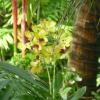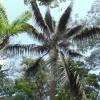Leaderboard
Popular Content
Showing content with the highest reputation on 02/27/2010 in all areas
-
So I had a little extra time on my hands today, and I decided that the coconuts I had with no water needed to be checked out before they rot through the shell and stink up my room (I'm keeping them inside for the winter). I took one big one that I found out by the beach and carefully pulled away enough husk to see the eyes, nothing. I ripped the remainder of the husk away and looked at the embryo, it was black, so I opened the nut and it was black and rotted, no luck... One of my 3 Jamaican tall nuts (from the Paul Drummond trees at Kopsick) no longer had any water on the inside, so I decided to check it too. I knocked these down still partially green, so I figured maybe they weren't mature enough. I carefully pulled husk away to find this Should I treat it like normal, or should I tape the husk back on, or plant it in a pot, or what? Thanks for any advise. Hopefully he grows up to big and strong like his daddy tree!1 point
-
theres 3 large royals that i know of in about a 7 mile radius, thats not too bad, the coconut palms got hit hard but it looks like they are still green in the very very center,and some even pushed out some green, thats good right? whats weird is that where theres damage it changes from fried to completly green, its realy noticeable when you go into downtown melbourne and beachside, i guess the gulf stream did its job. brevard dosnt landscape well, fort peirce planted litteraly hundreds of royals downtown.1 point
-
hmm i just put them in a pot and wait robusta is realy easy, i havent grown filifera, ive never seen one, (probably cause i live in a humid climate) but i know what they look like. you could let them soak in warm water for 24 hours then plant.1 point
-
1 point
-
Cool, there are "old florida" spots here, like pine island, but most of the rest of them are located out east, in areas where coconuts don't grow normally. They still exist though. Anna Maria island has many laws to prevent the island from becoming too big, such as the "no building taller than the tallest tree" (probably norfolk island pines), and laws which prevent big companies from coming there, there has to be under a certain amount of buildings of the business at the time of building to put it up. The only fast food is a subway built in the 60's before they were popular. It's pretty nice out there, lots of old coconuts.1 point
-
i love the barrier islands, on jungle trail in wabasso theres huge coconut palms planted near old houses probably built when they started the orange groves, they must have survived all the freezes from whenever the houses were built, there cracker houses, and there condos surrounding them , i like how west coast florida has more old florida areas. ill take a pic of the cocos people wrapped up in my neiborhood whenever i have camera. there still green1 point
-
Very good advise! I will try this in the new yard (when we get it, which will hopefully be before next winter so i can do trials) so I can have spots to put coconut palms.1 point
-
In downtown Bradenton, royals were undamaged, but coconuts still had some browning. In Manatee county, Anna Maria island is about the only safe haven from the freak cold winters, but they can even be damaged out there. There will always be something, be it LY, texas palm decline (that is killing our native Sabal palmetto!), cold, hurricanes etc. It's a wonder there are ANY plants around with everything that can kill them! I will still plant coconuts, but mostly the "talls" that are less cold sensitive. If LY eventually reaches my area (we have been safe so far), I will count my losses and restart with more "talls", as the cold kills coconuts way before LY, and with a coconut that gets up and out of the frost faster, I have a better chance at growing them. I'd like to see Beccariophoenix alfredii planted by the city in areas where they don't want coconuts to die from the cold. Only problem is the fact that the largest ones in cultivation are still not trunking yet. Hopefully they go the way of Bismarckia and become popular even among non palm people.1 point
-
EXACTLY!!! This is just what I said in one of those endless "lessons learned" posts about not zone-pushing blah blah blah. Truth is, you can plant ONLY (yawn) stuff for your zone - not that this protects you from freak winters - or you can plant only natives, and still lose your plants to a hurricane, tornado, lightning strike, fusarium outbreak, ganoderma, and so on. There are lots of plant-killers out there; cold is only one of them. Btw - I lost 4 huge, very native, pines to a tornado. Not cold. Not zone-pushing. Just a bad storm.1 point
-
Mathematics, physics, chemistry, and biology, are just a few that come to mind as EXACT and precise sciences!1 point
-
Kris that is impressive growth in one year. I have a sabal mexicana I started from seed that is three years old and it looks like the picture in your first post. Of course mine grows inside under lights for 6 months a year. I guess climate matters. None the less, I'll keep on growing 'em. Great pics and tutorials. Love your passion.1 point
-
Thanks Bo. Awesome shots Is the dypsis pilulifera same as the dypsis sp. (orange crush)? I got a couple seedlings from Jeff Marcus and was wondering if that is what I have to look forward to . Laura1 point
-
Thanks Bo! It looks cool. I wonder if there was some different parental heritage there....1 point
-
Laura, Thanks! I'm sure all the big Dypsis will grow for you, but you'll have to irrigate during the dry periods. Bo-Göran1 point
-
Dave and Dave! Thanks! And we all have choices in our lives! This is my choice!1 point
-
Hmmm...I think I'd better keep it real simple at this point and just say thank you! And Bill, I didn't forget about additional photos. My day took a different turn, but there's always tomorrow! Mike - well that's what El Niño will do: plenty of rain in SoCal and very little rain in Hawaii. Same thing happened in early 1998.1 point
-
Gary, Thanks! Our website is being updated every now and then when I take new photos and our daughter has the time to work on it. We're actually getting ready to update with a series of new photos, but it's a big project and will probably take a couple of months. Bo-Göran1 point
-
Just love those BGL Big Dypsis photos. Dypsis Bejofa is fantastic! My Dypsis bejofa is healthy and doing well, but it is so slow in Southern Cal that I fear I will never live to see it look like yours. This post motivates me to tour your website again, it has been a long time. Hope you have all the photos updated???? Thanks, Gary1 point
-
1 point
-
1 point
-
1 point
-
1 point
-
1 point
-
Are there fruiting double coconuts in places other than Seychelles? Foster Gardens Honolulu I was under the impression that only in Sri Lanka and Singapore botanical gardens had there been palms with fruit OTHER than Seychelles. Was completely unaware of Foster, if its true. Manny Manny, How could you doubt someone as honorable as me?? Steve, I want documentation. I want pictures, affidavits and legally binding paperwork that absolutely 100 % guarantees what your saying is true ! When I went to Seychelles, I brought back this small book on all endemic palm species from Seychelles, and in there it described the only places OUTSIDE of Seychelles where there were fruiting palms and like I said in an earlier post it was Sri Lanka and Singapore. But now add Foster's to the list !!!!! Thanks. Manny http://davesgarden.com/guides/pf/showimage/44928/ http://davesgarden.com/guides/pf/showimage/44930/ Quick question. I have heard comparisons between the looks of this palm and the Pritchardia genus, what Pritchardia species do you guys say most closely resembles this palm?1 point
-
Here's what he said about the seed: "I have had the seed for 4-5 years or so. It has been in the basement of my home where is it relatively cool year round. I got the seed from soemone in Santa Barbara who had the connect to he island. It did have a number on it when I got it. Wether it left the island legaly or not, not sure...as I got it through one other person." I say toast. Manny1 point
-
I collected some Hyphaene thebaica seed while in Ft. Myers, and nothing has happened yet. They seem to have a weird, dry pulpy inside, and I opened one and nothing was inside... I didn't want to take the risk with the others, so I haven't opened any more yet. What the heck is up with these seeds? They seem really weird.. Here's a pic1 point
-
4-5 years... I'd say it would be a lost cause, but I guess if you absolutely had to have one of this palm, and had no other source, it might be worth it for that small percentage of a chance that it will germinate.1 point
-
Here's what he said about the seed: "I have had the seed for 4-5 years or so. It has been in the basement of my home where is it relatively cool year round. I got the seed from soemone in Santa Barbara who had the connect to he island. It did have a number on it when I got it. Wether it left the island legaly or not, not sure...as I got it through one other person."1 point
-
Are there fruiting double coconuts in places other than Seychelles? Foster Gardens Honolulu I was under the impression that only in Sri Lanka and Singapore botanical gardens had there been palms with fruit OTHER than Seychelles. Was completely unaware of Foster, if its true. Manny Manny, How could you doubt someone as honorable as me??1 point
-
This seller has sold on E Bay for at least a couple of years or more. He used to mostly offer a few different kinds of palms. At some point not too long after I started following his offerings it seemed he found out that non perishable items were more lucrative. He is in my E Bay favorites and was reliable when I bought from him a couple of years ago. I don't remember all that I bought from him but I know he sold much larger than seedling Jubaeas. I bought one and it has been the only one I have ever been able to keep alive. It is still very healthy and has actually grown well for the hot southeast U.S. I don't give him credit for this but do give him credit for sending out a healthy plant at a good price. If anyone is interested then just contact him through the E Bay question link. I do remember he replied to questions and seemed like a good source. I would guess that he will probably be very honest with his response.1 point
-
By empty (as on the Ortanique site), does this imply anything about the seeds' viability? Are newer seeds "full" whereas when they get a bit older, they become empty? If they are known not to be viable, I can't imagine they would be selling them. Also, I just meant that the seller is located in the United States (California), thus it has already come from the Seychelles, so the sticker issue doesn't matter. The fact that it is here, however, might indicate that it is an older seed. -Michael1 point
-
Greg, IF its who I think it is, he was heavily involved in the So Cal Palm society for some time AND still makes it to the Santa Barbara meetings. Again, IF.1 point
-
I only see empty nuts available on Ortanique...and pricey at that! Lodoicea maldivica - One Large Empty Nut Double Cocount 575.00 Lodoicea maldivica - One Small Empty Nut Double Cocount 475.001 point
-
Bo, I think you are correct. As some of you might have read from earlier posts of mine, I visited Seychelles in 2006 and my cousin and I brought back 5 seeds. All heavy. Only ONE has germinated to date. I am now convinced that the probable reason for the poor germination rate is that these were older seeds that were in the sellers closet for God knows how long. The fresher the seeds the better, no doubt about it. One more thing I noticed from the picture: It my understanding that both empty and heavy seeds have to have little stickers on them so that they can legally be taken out of the country. Maybe the sticker is on the other side of the one pictured on ebay. I would advise those willing to bid on this to keep it low, because its age can really make a difference. 2 of mine, which have been in the ground since 2006 are still heavy. So just because they're heavy doesn't necessarily mean anything. In my humble opinion. Manny1 point
-
I agree, of course he doesn't have to tell the truth. And since he says it might not sprout, you can't provide negative feedback... I wonder how much a viable seed would go for on the black market1 point
-
With that seller ID, the location and the 100% feedback, I wonder if its Rob Orth.1 point
-
"It was called Coco de Mer because Portuguese sailors found them bobbing around in the Indian Ocean..." I thought these seeds sank, preventing the palm from increasing its distribution throughout the area. (I suppose they might have been seeing nonviable seeds floating around.)1 point
-
Well, the seller specifically says that he doesn't know if the seed is viable, and that's crucial. For all a buyer knows, the seed could be ten years old. Still a good price for something that's extremely rare, though.1 point
-
The seed pic helped actually. I cleaned it and it kind of looked like that, so i'll give it a try, but I won't expect anything.1 point
-
1 point
-
1 point
-
1 point
-
Nice one Al! Thanks for posting that. Keith, judging by is neat trim and golf course locale, I would imagine your intuition was correct. I'm almost certain it never is allowed to fruit.1 point
-
1 point
-
1 point
-
Woo! If you move before they fruit, there are plenty of people around here who wouldn't mind taking them, and we have the resident expert on transplanting palms (Ken Johnson), so I don't think you'll have any trouble. Also, they wouldn't have trouble in Hawaii, so you can get seed mailed to you by whoever has the palms. And, when they fruit, I'll have the money to buy some from you. I think one of these would make a good donation to Gizella Kopsick Palm Arboretum!1 point
-
I'm just curious. What exactly about it is ugly? And, why does it look "sick"?1 point
-
Wow! That was a great article, almost more than I need to know about Coconuts. Dick1 point
-
As I usually do when a topic catches my attention I started an internet search on this coconuut variety as well as a second one. I came up with the following article complete with photos that some of you (Keith) might enjoy reading. http://www.agroforestry.net/tti/Cocos-coconut.pdf1 point
-
1 point


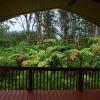


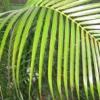
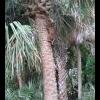
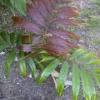
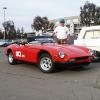
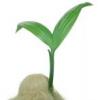
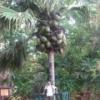
.thumb.jpg.4e91fe2cb87ace844d8164b8e9e1f271.jpg)


